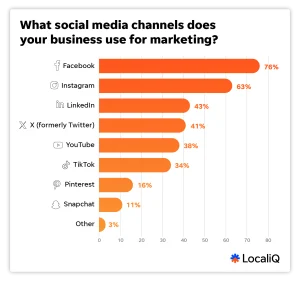Let’s be honest—building an online community in 2025 isn’t just about racking up followers or flooding feeds with content. It’s about creating a space where people want to linger, engage, and—most importantly—trust each other. Here’s the deal: authenticity isn’t optional anymore. It’s the currency of connection.
Why Authenticity Matters More Than Ever
Think of your favorite coffee shop. The barista remembers your order, the regulars nod hello, and the vibe just… clicks. That’s the feeling you want online. In 2025, users are savvier—and more skeptical—than ever. They crave real interactions, not just polished marketing.
Key stat: 78% of consumers say authenticity is the #1 factor in deciding which brands to support (2024 Edelman Trust Barometer).
Step 1: Define Your Community’s Purpose
Before you invite people in, ask: Why does this community exist? A vague “let’s connect” won’t cut it. Try these prompts:
- What problem does this group solve?
- What makes it different from Facebook groups or subreddits?
- How will members feel after participating?
Example: A “Sustainable Living for Beginners” community might focus on actionable tips, not just eco-guilt.
Step 2: Choose the Right Platform
Not all platforms are created equal. Here’s a quick breakdown:
| Platform | Best For | Watch Out For |
| Discord | Real-time chats, niche groups | Can feel chaotic without structure |
| Mighty Networks | Paid memberships, courses | Steeper learning curve |
| Instagram Subscriptions | Creators with visual audiences | Algorithm dependency |
Pro tip: Start small. A hyper-focused WhatsApp group often outperforms a sprawling, impersonal forum.
Step 3: Set the Tone (Without Being Tyrannical)
Ever joined a group where the rules felt longer than the Constitution? Yeah, don’t do that. Instead:
- Pin 3–5 core guidelines (e.g., “Assume good intent”)
- Model the behavior you want—reply with nuance, admit mistakes
- Use humor when appropriate (memes > legalese)
Example: The “Anti-Hustle Culture Club” community kicks off debates with, “What’s your laziest win this week?”
Step 4: Foster Real Connections
Algorithms reward engagement, but communities thrive on belonging. Try these tactics:
- Spotlight members: “Member of the Month” features or AMAs
- Create rituals: Weekly threads like “Fail Friday” or “Small Wins Sunday”
- Go beyond text: Voice notes, live co-working sessions, or IRL meetups
Note: The #1 mistake? Treating your community like a broadcast channel. Respond to comments with follow-up questions—not just heart emojis.
Step 5: Handle Conflict Like a Pro
Conflict isn’t failure—it’s proof people care. But left unchecked, it can spiral. Here’s how to mediate:
- Address issues privately first (DMs > public callouts)
- Redirect, don’t shut down: “Let’s revisit our community values…”
- Know when to part ways—toxic members drain energy
True story: A parenting group avoided flame wars by adding a “Vent vs. Advice” tag system.
2025 Trends to Watch
The landscape’s shifting. Keep an eye on:
- AI moderation tools (but keep humans in the loop)
- Micro-communities within larger platforms (think: LinkedIn subgroups)
- Audio-first spaces—voice notes and live audio aren’t going away
Final Thought: Less Growth, More Glue
In 2025, the most vibrant communities won’t be the biggest—they’ll be the ones where members say, “This feels like home.” It’s not about viral moments. It’s about showing up, day after day, and caring more about depth than metrics.






More Stories
Social Media Strategies for Local Service Businesses: Stop Shouting, Start Connecting
The role of AR filters in brand storytelling and audience interaction
What’s Really Happening on Your Website? Discover Deeper Insights with ViewStats API